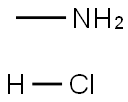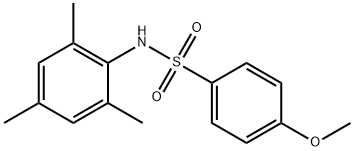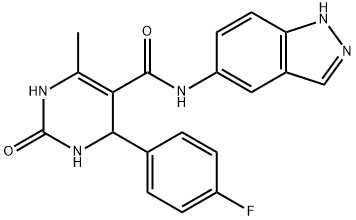ABT 702 Dihydrochloride
- CAS NO.:1188890-28-9
- Empirical Formula: C22H19N6OBr.2HCl
- Molecular Weight: 0
- Update Date: 2023-05-18 11:31:02
What is ABT 702 Dihydrochloride?
Biological Activity
adenosine (ado) is an endogenous homeostatic inhibitory neuromodulator that reduces cellular excitability at sites of tissue injury and inflammation. inhibition of adenosine kinase (ak), the primary metabolic enzyme for ado, selectively increases ado concentrations at sites of tissue trauma and enhances the analgesic and antiinflammatory actions of ado. abt 702 is a novel, potent nonnucleoside ak inhibitor.
in vitro
abt 702 was active both in inhibiting ak (ic50 ) 1.7 nm) and ado phosphorylation in the intact cells (ic50 ) 50 nm). abt 702 was also highly selective for ak inhibition as compared to other sites of ado action including ada, ado receptors, and ado transport sites [1].
in vivo
abt 702 had dose-dependent antinociceptive and antiinflammatory actions in a variety of animal models of nociceptive, inflammatory, and neuropathic pain. abt 702 is the first of a novel class of potent, selective, non-nucleoside, orally active ak inhibitors that have potent antinociceptive effects in animal models [1].
References
[1] lee ch, jiang m, cowart m, gfesser g, perner r, kim kh, gu yg, williams m, jarvis mf, kowaluk ea, stewart ao, bhagwat ss. discovery of 4-amino-5-(3-bromophenyl)-7-(6-morpholino-pyridin-3-yl)pyrido[2,3-d]pyrimidine, an orally active, non-nucleoside adenosine kinase inhibitor.. j med chem. 2001 jun 21;44(13):2133-8.
Properties of ABT 702 Dihydrochloride
| storage temp. | Inert atmosphere,Store in freezer, under -20°C |
| solubility | insoluble in H2O; ≥107.2 mg/mL in DMSO; ≥9.84 mg/mL in EtOH with gentle warming and ultrasonic |
| form | solid |
| color | Orange |
Safety information for ABT 702 Dihydrochloride
| Signal word | Warning |
| Pictogram(s) |
 Exclamation Mark Irritant GHS07 |
| GHS Hazard Statements |
H302:Acute toxicity,oral H315:Skin corrosion/irritation H319:Serious eye damage/eye irritation H335:Specific target organ toxicity, single exposure;Respiratory tract irritation |
| Precautionary Statement Codes |
P261:Avoid breathing dust/fume/gas/mist/vapours/spray. P305+P351+P338:IF IN EYES: Rinse cautiously with water for several minutes. Remove contact lenses, if present and easy to do. Continuerinsing. |
Computed Descriptors for ABT 702 Dihydrochloride
New Products
4-AMINO-TETRAHYDRO-PYRAN-4-CARBOXYLIC ACID HCL 4-(Dimethylamino)tetrahydro-2H-pyran-4-carbonitrile 4-Aminotetrahydropyran-4-carbonitrile Hydrochloride (R)-3-Aminobutanenitrile Hydrochloride 3-((Dimethylamino)methyl)-5-methylhexan-2-one oxalate 1,4-Dioxa-8-azaspiro[4.5]decane 5-Bromo-2-nitropyridine Nimesulide BP Aceclofenac IP/BP/EP Diclofenac Sodium IP/BP/EP/USP Mefenamic Acid IP/BP/EP/USP Ornidazole IP Diclofenac Potassium THOMAIND PAPER PH 2.0 TO 4.5 1 BOX BUFFER CAPSULE PH 9.2 - 10 CAP SODIUM CHLORIDE 0.1N CVS ALLOXAN MONOHYDRATE 98% PLATINUM 0.5% ON 3 MM ALUMINA PELLETS (TYPE 73) LITHIUM AAS SOLUTION 2-Bromo-1-(bromomethyl)-3-chloro-5-nitrobenzene 2-Bromo-3-nitroaniline N-(3-Hydroxypropyl)-N-methylacetamide 3-Bromo-6-chloropyridazine 4-ethyl-3-nitrobenzoic acidRelated products of tetrahydrofuran





![1-[[(6R,7R)-7-[[(2Z)-(2-Amino-4-thiazolyl)[(1-carboxy-1-methylethoxy)imino]acetyl]amino]-2-carboxy-8-oxo-5-thia-1-azabicyclo[4.2.0]oct-2-en-3-yl]methyl]pyridinium chloride monohydrochloride](https://img.chemicalbook.in/CAS/GIF/73547-70-3.gif)


You may like
-
 1-Methyl-6-oxo-1,6-dihydropyridazine-3-carbonitrile 98%View Details
1-Methyl-6-oxo-1,6-dihydropyridazine-3-carbonitrile 98%View Details
99903-60-3 -
 88491-46-7 98%View Details
88491-46-7 98%View Details
88491-46-7 -
 1823368-42-8 98%View Details
1823368-42-8 98%View Details
1823368-42-8 -
 2-(3-(tert-butyl)phenoxy)-2-methylpropanoic acid 1307449-08-6 98%View Details
2-(3-(tert-butyl)phenoxy)-2-methylpropanoic acid 1307449-08-6 98%View Details
1307449-08-6 -
 Ethyl 3-(furan-2-yl)-3-hydroxypropanoate 25408-95-1 98%View Details
Ethyl 3-(furan-2-yl)-3-hydroxypropanoate 25408-95-1 98%View Details
25408-95-1 -
 2-Chloro-5-fluoro-1-methoxy-3-methylbenzene 98%View Details
2-Chloro-5-fluoro-1-methoxy-3-methylbenzene 98%View Details
1805639-70-6 -
 1784294-80-9 98%View Details
1784294-80-9 98%View Details
1784294-80-9 -
 Lithium ClavulanateView Details
Lithium ClavulanateView Details
61177-44-4